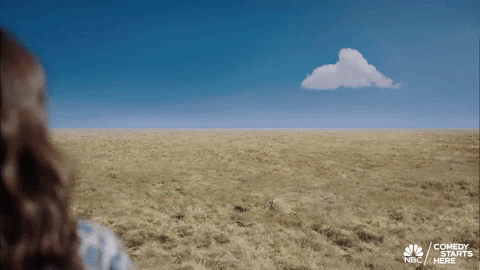“There’s no there, there.”
Stein’s oft-quoted line about her hometown of East Oakland was not a slight but an “expression of painful nostalgia,” as one author points out. I think that same phrase could describe the issue at the heart of the office today. What we once had was lost, and we are tasked with creating “there” once again.
Where Was There?
In a pre-pandemic world, I was woken up by my alarm at 5:30 every day so that I could have enough time to get ready, help with the kids, and race to the ferry for 7 am where I’d begin answering emails. After a ride across the bay, I took a short walk to my office. I’d usually stop at the Bluebottle on Sansome Street and inevitably run into 2-4 other people that I knew. (The Bluebottle at 115 Sansome served as a bit of a crossroads for architects, project managers, techies, and real estate folks.)
After that interlude, I’d head to the office and start my work day. Our team had a common room with no desks. Just one big round table with whiteboards and pinboards all around it. We had a video screen on a cart for meetings. We all had our places to go. But, we’d often just sit in the same room, chatting with each other about this or that, what we needed help solving. Of course, someone would pop in randomly, which was both disruptive and somehow welcome.
We’d eat lunch together in the cafe or we’d tuck in with folks from other teams to catch up on the latest company happenings. Often, it was about a product launch or a new team being formed that no one quite knew all the details about. There were also frequent visitors from other offices, who you were always welcome because they brought with them a sense of novelty.
The rest of the day was a blur of meetings. And then, soon enough, it was time for a walk back to the ferry. On the way home, I’d run into the usual folks both before and on the ferry. I’d get home by 7 pm to eat dinner, then tuck the kids in before passing out to do it all again. That routine was a constant hum only occassionally altered with events, happy hours, and offsite.
It was undeniable during that time and in those places, there was a real sense of belonging within the spaces we utilized, built and inhabited together. There was a sense of place. There was a “there” there.
Where is There, Now?
The above routine could describe many of our work lives and routines before the pandemic. Replace the ferry with a walk throught he living room then replace every human interaction with a scheduled Zoom, and you get the pandemic era of remote work.
However, as we emerged from the pandemic, many of us were called back to those original places only to find that there was no sense of “there” anymore. It was somehow washed away in our absence over subsequent lockdowns. Many of the people you had enjoyed waving to or bumping into at the coffee shop had relocated. They’d uprooted their lives to create a more balanced one somewhere near family or a place where they could afford to buy a house.
The reality quickly hit that while the places we frequented were all still there something had changed about them. Because spaces are only places when they have community and people within them. The culture we craft around a space makes it a place and imbues it with our essence. The place we remembered was no longer there, leaving a painful nostalgia in its wake.
Our there is now splintered into a thousand “theres” of online communities, chat groups, and coworking spaces. Our teams are distributed; our connections fragmented. We are trying to put together the pieces while being told that we must return to something that no longer serves it’s purpose.
Creating Anew

Gif by boomunderground on Giphy
There comes a moment, after the painful nostalgia, when you accept that the place that once existed is never coming back—that time, that place, those people. We must accept where we are now. But we might also realize the great gift of reimagining these places and creating something new. The table has been cleared and now we can reset it.
Crafting a place isn’t easy. It takes time. Developing rituals, connections, and everything required to make a place great is a particular skill. It must not be rushed, and it must be done with consideration. To create a place, we must take our time. Like a craftsman restoring a tool, we must consider what to keep, what to replace, and what we need to add to create the new. This is the work of decades, not days. And it must be done.
To effectively rebuild our places, we must consider all of our spaces in their new context, not in a context that no longer exists. Different disciplines must work together to envision the uses, design, and construction of the physical frameworks. Over time, we can then imbue it with the rituals, activities, and pieces that make a space a place.
Because, at least for this writer, even though I am happy with the increased balance I have found in my life today, I find myself yearning for that previous sense of place. “There” — where I am inspired by people, where I can commiserate, where I am accepted, and where I am challenged. While the old places might be gone, I believe we can and will create new ones that are even greater. Then, one day, someone will look back with painful nostalgia at those new places we crafted and miss them.


